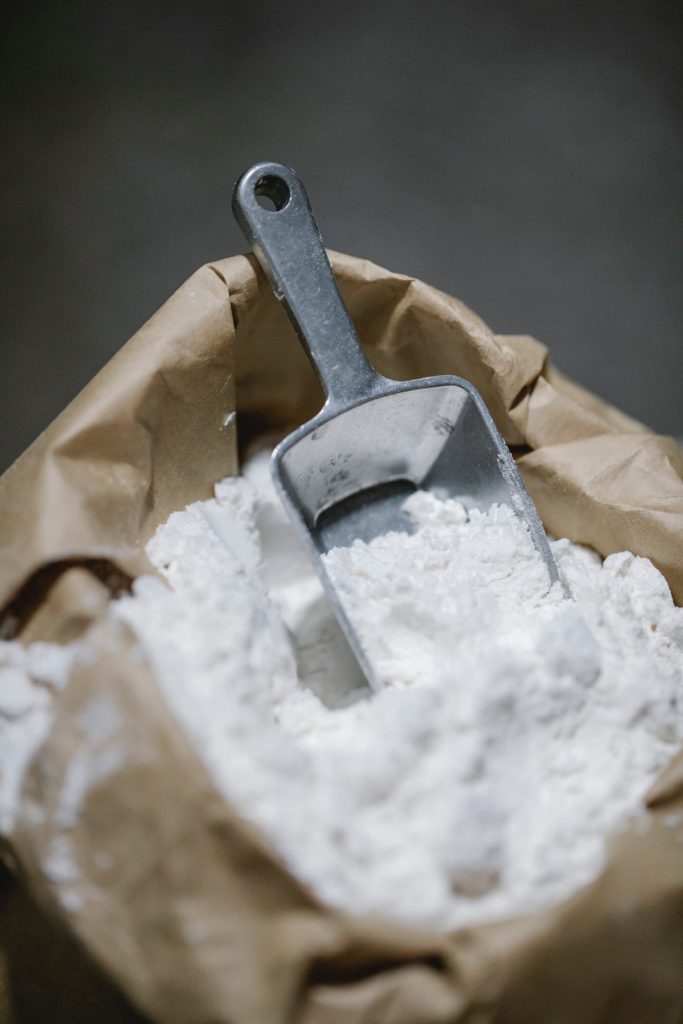This post contains affiliate links. This means I earn a small commission at no cost to you. You can view my affiliate disclosure here.
Who doesn't love a warm loaf of bread made with freshly milled flour? It's not the same as bread made with flour that has been sitting on the shelf. Here, I will be explaining why you want to mill your own grains, how to store the flour, what grain mill to buy, and more.
Let's get started!
Why Mill Grain at Home?
- As I mentioned above, using freshly milled flour enhances the flavor of your bread. This is especially important if you make a lot of bread or baked goods. If you are using flour in your cooking and baking regularly, it makes sense to mill your flour.
- Many people aren't aware of this, but flour does go rancid. The longer it sits, the more rancid it gets. Grain lasts a lot longer as whole wheat berries when stored properly.
- Freshly milled flour contains more nutrients than flour that has been sitting on a shelf. This makes sense because as it gets stale and rancid, vitamins and minerals decrease.
- It is less expensive. Yes, you initially have to purchase a grain mill, but it will pay itself off and more because grain is cheaper to buy than flour. And the cool thing is that a half cup of grain, when milled, makes a whole cup of flour. You can save even more by buying grain in bulk.
- If you have a sourdough starter, the freshly milled flour makes the starter more active. You need a healthy, active starter to get breads to rise.

What Grain Mill Should I Buy?
Manual vs. Electric
When looking at mills, they will fit into two categories: manual (hand crank) or electric. Obviously, the electric mills are going to be easier to use because they just plug in and turn on. The manual mills are a good arm and shoulder workout! However, they are great for people who have frequent power outages or live off the grid.
Stone Mills
Two popular stone mills are the KoMo Mill and the Mockmill. The stone mills produce a stone ground flour. You may have heard of stone ground flour before. Traditionally, people would take their grain to the village stone mill to grind their grain. Modern, electric stone mills have two smaller stones inside of the machine. The grain is ground between these two stones.
Stone mills have the ability to produce a finer flour and they have a wider range of fine to course flour. You can get as course as cracked wheat with stone mills. The flour that comes out of the mill is slightly warm to the touch, but it is cooler than most mills. A cooler flour will preserve more nutrients.

The last thing to know about stone mills, in comparison to impact mills, is that they are quieter. The volume (of stone mills) is slightly below the sound of a blender (in my experience). That would be something to consider if you live with other people or have close neighbors.
The downside to stone mills is that they cannot handle wet and oily materials (like nuts or some spices).
I own the Mockmill 100 and I have absolutely no complaints about it. It has a simple design and is very easy to set up. It has never jammed on me. In the future, I plan to write a dedicated post on the Mockmill.
Impact Mills
Impact mills, like the Wondermill and Nutrimill, contain a ring of steel fins on the inside of the mill. When the grain hits these fins, it explodes. This creates a louder sound than other types of mills. The flour produced by these mills is warmer than other types of mills, which can impact the amount of nutrients in the flour.
Unlike other mills that can handle multiple materials, impact mills just mill flour, and have a smaller texture range (courser flour to a finer flour). However, the price of these mills is typically lower than many other types of mills.
If you are just looking to make bread/baked goods and are on a budget, this would be the perfect mill.

Steel Burr Mills
Instead of grinding grain between stones, steel burr mills, like the Wondermill Junior Deluxe, grind grain between steel burrs. This means you can grind wet and oily materials in these mills.
Like the stone mills, these mills are quieter and can grind a variety of materials.
KitchenAid Attachments
There are grain mill attachments that you can use with a KitchenAid mixer, if you own one. This is a great option for people who don't mill as often. I would not recommend the KitchenAid brand grain mill because it has been known to burn out the mixer's motor.
I have heard good things about the Mockmill KitchenAid attachment. I haven't personally tried it, but I know others who like it. It is cheaper than the stand-alone mill and takes up less space.
What Materials Can Be Milled?
Some mills can handle wet and oily materials (like coffee beans, oily spices, and nuts), but I would honestly reserve those for the blender. I would recommend a high powered blender like a Vitamix for this purpose.
Depending on the grain mill you own (check the user manual), you can mill beans, sprouted grains (dry them first), popcorn (to make corn flour), spices, salt, and grain, of course.

Where to Buy Grain
I like to buy most of my grains from Azure Standard. At Azure Standard, you can buy bulk sizes at a cheaper price per lb. It also saves you from the hassle of having to restock every few weeks. If you haven't heard of Azure Standard, you can read my review here. For einkorn, I will sometimes purchase bulk bags from Jovial.
Storing Grain and Flour
Store grain in a dry, cool place. A little below room temperature is best. It is very important that the grain is kept in a sealed container. I buy food grade buckets from Azure Standard to store grain in. Alternatively, you could buy mylar bags and oxygen absorbers to keep your grain fresh. If you plan on keeping your grain for more than 4-6 months, you will probably want to stick it in the freezer.
Milled flour should not be left out at room temperature for more than 2-3 days. If you have extra flour that you are not going to use for awhile, put it in a sealed container in the freezer (I use mason jars). It should be good in there for a couple months. I like to use that extra flour for rolling out dough and flouring surfaces.
This is my beginners guide to home grain milling. If you have any questions, I would be happy to answer them. I am not an expert in the individual mills, but I can try to point you in the right direction.





Comments
No Comments